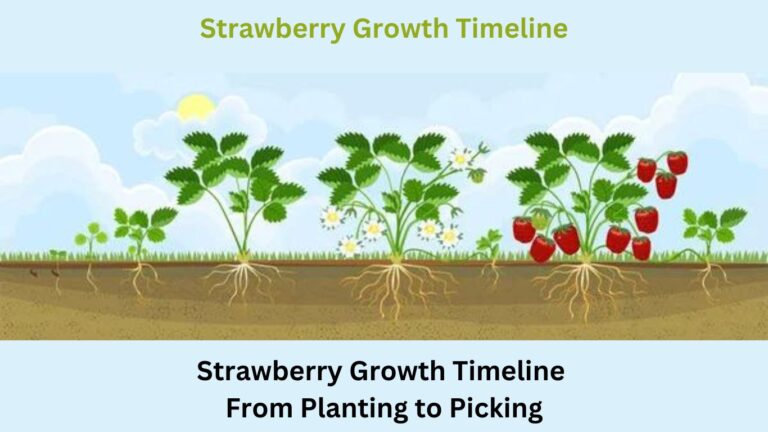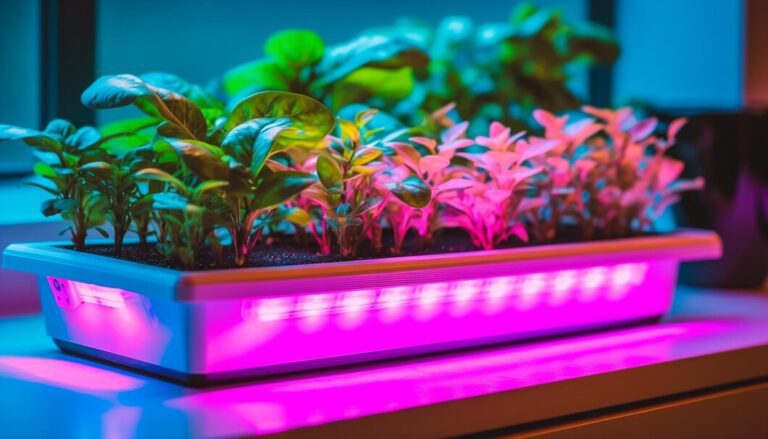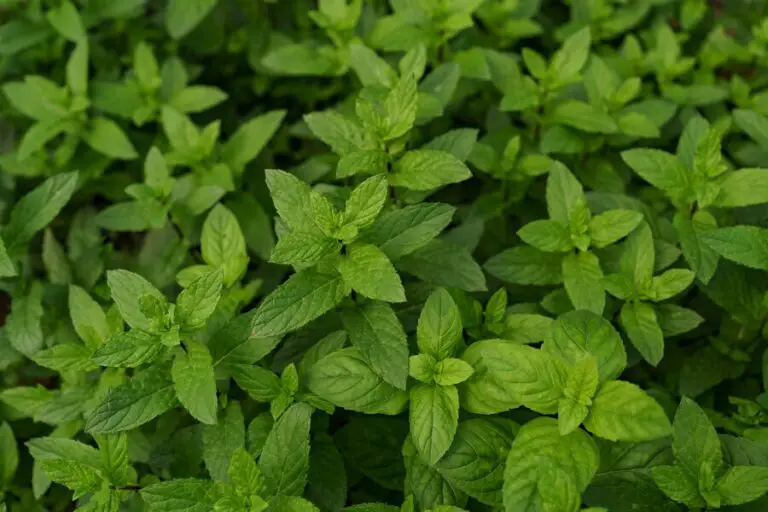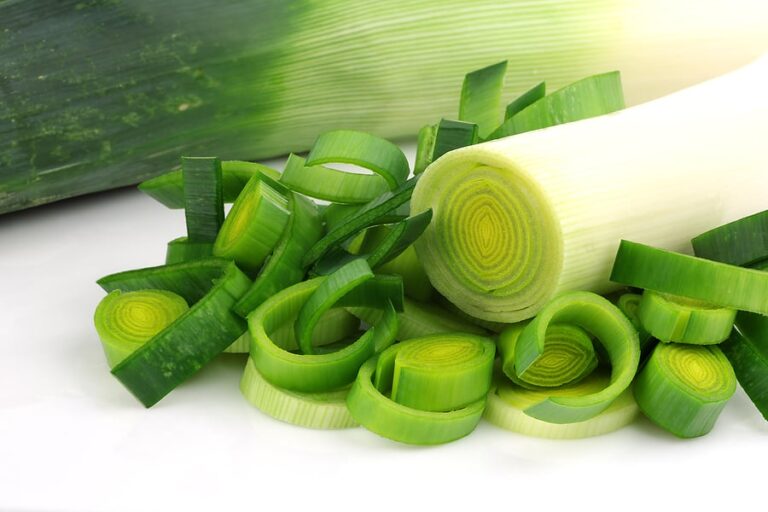Foliar Spray: What It Is, How It Works, and How to Use It for Your Plants
Are your plants struggling to thrive despite your best efforts? The secret to healthier, more vibrant foliage might be simpler than you think: foliar spray . This powerful tool delivers essential nutrients directly to your plants’ leaves, bypassing soil absorption and ensuring rapid results.
But what exactly is foliar spray, how does it work, and—most importantly—how can you use it effectively in your garden? In this comprehensive guide, we’ll break down everything you need to know about this game-changing technique. From boosting nutrient uptake to reviving stressed plants, you’ll discover why foliar spraying is a must-have skill for every gardener, farmer, or plant enthusiast.
Whether you’re growing lush houseplants, bountiful vegetables, or vibrant flowers, mastering foliar spray can take your green thumb to the next level. Let’s dive into the science, benefits, and step-by-step instructions to unlock the full potential of your plants.
Table of Contents
The Benefits of Foliar Application for Plant Health
Foliar spray application, the process of applying nutrients directly to plant leaves, offers numerous benefits for plant health. Through this method, plants can efficiently absorb essential nutrients and other beneficial substances, leading to improved growth, resistance to diseases, and higher yields.
One of the key advantages of foliar application is its ability to enhance nutrient uptake. When applied to leaves, nutrients can be rapidly absorbed and utilized by plants, bypassing any potential soil limitations or nutrient imbalances. This allows plants to quickly acquire the nutrients they need for optimal growth, even in conditions where the soil may lack certain elements.
Additionally, foliar spray treatments can directly address nutrient deficiencies by delivering targeted doses of specific nutrients. This precision allows growers to tailor their applications based on individual plant needs, correcting deficiencies and promoting balanced nutrient levels. Such targeted nutrition helps plants to thrive and enables them to reach their maximum potential in terms of growth, yield, and overall health.

Science Behind Foliar Sprays
Foliar sprays have gained significant attention from gardeners and agricultural experts alike due to their potential in promoting plant health and improving crop yields. However, to truly harness the benefits of foliar application, it is crucial to understand the science behind this method.
At its core, foliar spray involves applying nutrients, pesticides, or hormones directly to the leaves of plants. This method bypasses the limitations of traditional soil applications, enabling plants to efficiently absorb the applied substances and rapidly respond to them. Research has shown that leaves possess a remarkable ability to absorb and transport nutrients, allowing for quick and targeted delivery to various parts of the plant. Additionally, the stomata, or tiny pores on the leaf surface, play a vital role in facilitating nutrient uptake and gas exchange between the plant and its environment.
The science behind foliar sprays revolves around utilizing the leaf’s inherent capabilities to optimize nutrient uptake and promote plant health. By understanding the intricacies of leaf anatomy and physiology, gardeners and farmers can fine-tune their foliar spray applications to provide the right nutrients at the right time, enhancing plant growth and addressing specific deficiencies or challenges. Furthermore, an in-depth comprehension of the science behind foliar sprays empowers practitioners to fully utilize this method’s potential, resulting in healthier, more productive plants.
Key Components of an Effective Foliar Spray
An effective foliar spray consists of several key components that work together to enhance plant health and promote optimal growth. These components are carefully selected, taking into consideration the specific needs of the plants and the goals of the application.
One crucial component is the choice of nutrients or fertilizers used in the foliar spray. These nutrients are often in the form of soluble salts or chelated compounds that can be easily absorbed by plant leaves. Nitrogen, phosphorus, potassium, and micronutrients such as iron, zinc, and manganese are commonly included in foliar sprays to address nutrient deficiencies and support overall plant development. This targeted application allows for efficient nutrient uptake and utilization, bypassing any soil limitations or imbalances. Additionally, the form and concentration of the nutrients in the spray need to be carefully calibrated to ensure optimal absorption and avoid any potential phytotoxicity.
Another vital component of an effective foliar spray is the inclusion of adjuvants. Adjuvants are substances that improve the performance and efficacy of the spray by enhancing its spreading and sticking properties, reducing surface tension, and improving coverage on the leaf surface. Surfactants, wetting agents, and stickers are commonly used adjuvants in foliar sprays. They help the spray to spread evenly across the leaves, ensuring maximum contact with the plant tissue and increasing the chances of effective nutrient absorption. Adjuvants also play a crucial role in reducing runoff and minimizing the potential for environmental contamination.

- IMPROVES PHOTOSYNTHESIS AND REDUCES LEAF YELLOWING: TPS Canopy Boost Foliar Spray improves plant function and kick-start…
- SUPPORTS VIGOROUS CANOPY AND ROOT GROWTH: Canopy Boost leaf spray stimulates metabolism, increasing photosynthesis causi…
- PROMOTES PHOTOSYNTHESIS: TPS Canopy Boost spray contains powerful bioavailable magnesium, a key component of photosynthe…






- 100% ORGANIC PLANT FOLIAR SPRAY: Helps plants grow lush and green. Perfect for house plants or garden varieties.
- HIGH LEVELS OF KELP, MAGNESIUM, FULVIC ACID AND TRACE MICRONUTRIENTS: Loaded with vitamins, minerals and plant growth ho…
- CAN BE USED ON HOUSEPLANTS, GREENHOUSE PLANTS AND OUTDOOR PLANTS






- ORGANIC FOLIAR SPRAY – Immediately delivers macronutrients, micronutrients, and soil-enriching microbes to plants throug…
- REDUCES PLANT STRESS – Rapidly corrects nutrient deficiencies by shortcutting the root system and swiftly delivers criti…
- CRUCIAL FOR BABY PLANT SUCCESS – Clones and seedlings with underdeveloped root systems require foliar feeding to avoid y…






- NATURAL PLANT NUTRIENT: Contains kelp concentrate (Ascophyllum nodosum) offering a natural boost of potassium to support…
- MAXIMIZES GENETIC POTENTIAL: Essential nutrients empower plants to achieve their full genetic potential, resulting in ro…
- CORRECTS POTASSIUM DEFICIENCIES: Effective as a foliar spray for quick absorption, addressing minor potassium deficienci…
- 🌿 PREVENT DEFICIENCIES – Prevent yellowing, slow growth and poor productivity. Calcium paired with Magnesium offers a co…
- 🌿 MACRO & MICRO NUTRIENTS – HydraCalMag has Calcium, Magnesium, Iron, Molybdenum and Zinc plus more to help plants achie…
- 🌿 DOUBLES AS A FOLIAR SPRAY – Apply this Cal-Mag as a foliar spray, in between feedings, during the growing season to pr…






Maximizing Nutrient Uptake through Foliar Application
Foliar application is a proven technique for maximizing nutrient uptake in plants, offering several advantages over traditional soil-based methods. When nutrients are sprayed directly onto the leaves, they are quickly absorbed through the stomata and transported throughout the plant, bypassing any potential interferences in the soil. This allows for a more efficient and targeted delivery of essential nutrients, enhancing overall plant health and productivity.
One key factor in maximizing nutrient uptake through foliar application is selecting the right nutrient formulation. It is essential to choose a product that is specifically designed for foliar application, as it will contain nutrients in a form that can be readily absorbed by the leaves. Look for formulations that include chelated or complexed nutrients, as these are more stable and less likely to be tied up by other elements in the plant or the environment. Additionally, consider the nutrient ratios in the formulation, ensuring that it meets the specific needs of your plants at different growth stages. By providing the right nutrients in the right form, you can optimize their uptake and utilization by the plants.
- IMPROVES PHOTOSYNTHESIS AND REDUCES LEAF YELLOWING: TPS Canopy Boost Foliar Spray improves plant function and kick-start…
- SUPPORTS VIGOROUS CANOPY AND ROOT GROWTH: Canopy Boost leaf spray stimulates metabolism, increasing photosynthesis causi…
- PROMOTES PHOTOSYNTHESIS: TPS Canopy Boost spray contains powerful bioavailable magnesium, a key component of photosynthe…






Exploring the Different Types of Foliar Sprays and Their Uses
Foliar sprays are an invaluable tool for gardeners and farmers alike, providing a targeted and efficient method of delivering essential nutrients and compounds directly to a plant’s leaves. There are various types of foliar sprays available, each with its own specific uses and benefits.
One common type of foliar spray is the micronutrient spray, which contains a combination of essential trace elements such as iron, manganese, zinc, and copper. These micronutrients are vital for various plant processes, including photosynthesis, enzyme activity, and hormone synthesis. By applying micronutrient sprays, gardeners can correct and prevent nutrient deficiencies, ensuring optimal plant health and growth.
In addition to micronutrient sprays, there are also foliar sprays specifically formulated to enhance plant resistance to diseases and pests. These sprays typically contain natural compounds such as oils, extracts, or beneficial bacteria that strengthen the plant’s immune system and act as a deterrent to harmful pathogens and insects. When used correctly, these sprays can reduce the need for chemical pesticides, promoting a more sustainable approach to garden and crop management.
Furthermore, foliar sprays can be tailored to suit specific growth stages or plant needs. For instance, foliar sprays rich in nitrogen and phosphorus are commonly used during periods of rapid growth or flowering to support energy production and flower formation. On the other hand, foliar sprays high in potassium are beneficial for enhancing fruit quality and promoting overall plant resilience.
Overall, the different types of foliar sprays provide gardeners with a flexible and effective means of supplementing plant nutrition, preventing diseases, and promoting optimal growth and development. By understanding their unique uses and benefits, gardeners can maximize the potential of their plants and achieve impressive results in their gardens or fields.


The Importance of Proper Timing for Foliar Application
Proper timing is crucial when it comes to foliar application. This technique of applying nutrients directly to the leaves offers numerous benefits but can also be ineffective if not done at the right time. When determining the appropriate timing for foliar application, it is important to consider the growth stage of the plant, the weather conditions, and the specific nutrients being applied.
Different plants have varying nutrient requirements at different stages of growth. For instance, during the early stages of development, plants require different nutrients compared to the flowering or fruiting stage. By understanding the specific needs of your plants, you can tailor your foliar applications to deliver the right nutrients at the right time. This targeted approach ensures that the plants receive the necessary substances when they are most receptive and can benefit from them the most.
Weather conditions also play a significant role in the timing of foliar sprays. Applying foliar sprays during certain weather conditions, such as intense heat or heavy rainfall, may lead to insufficient absorption or even wash away the nutrients before they can be taken up by the plants. To optimize nutrient uptake, it is advised to apply foliar sprays during cooler and calmer periods, when the stomata (tiny openings on the leaves) are more receptive and the risk of nutrient loss is minimized.
Techniques for Applying Foliar Sprays Correctly
Applying foliar sprays correctly is crucial for maximizing their effectiveness and ensuring optimal plant health. There are several key techniques to keep in mind when using foliar sprays in your gardening or agricultural practices.
Firstly, it is important to apply foliar sprays during the appropriate time of day. The early morning or late afternoon is generally the best time, as this allows the leaves to dry before nightfall, reducing the risk of disease development. Additionally, avoid applying sprays during hot, sunny periods, as this can result in rapid evaporation and diminished absorption.
Another technique to consider is achieving thorough coverage on the plant’s foliage. Ensure that the spray is evenly distributed, covering both the upper and lower surfaces of the leaves. This can be achieved by adjusting nozzle settings or using specialized equipment designed for foliar application. Proper coverage is essential for enabling the plant to absorb the nutrients or protective substances from the spray effectively.
By employing these techniques, you can increase the efficacy of foliar sprays and promote healthier plant growth. However, it is essential to remember that different plants may have varying requirements when it comes to application methods and rates. Therefore, it is always advisable to consult specific product labels or seek guidance from professionals to ensure the correct application of foliar sprays for specific plant species or varieties.
| Application Practices | Description |
|---|---|
| Timing of Foliar Sprays | Apply sprays in the early morning or late afternoon to allow leaves to dry before nightfall, reducing the risk of disease development. |
| Avoiding Hot, Sunny Periods | Avoid application during hot, sunny periods to prevent rapid evaporation and ensure optimal absorption of the spray. |
| Ensuring Thorough Coverage | Achieve thorough coverage by evenly distributing the spray on both upper and lower leaf surfaces for effective pest and disease control. |
| Utilizing Specialized Equipment | Adjust nozzle settings or use specialized equipment designed for foliar application to achieve proper coverage and enhance effectiveness. |
| Consulting Product Labels and Professionals | Refer to specific product labels or seek guidance from professionals to determine correct application methods and rates for different plants. |
Addressing Common Misconceptions about Foliar Sprays
When it comes to foliar sprays, there are several common misconceptions that need to be addressed. One of the most prevalent misconceptions is that foliar sprays can replace traditional soil-based fertilization methods entirely. While foliar application is a valuable and efficient way to deliver nutrients directly to plant tissues, it should not be seen as a complete substitute for soil fertilization. The fact is that plants still rely on a healthy root system and a nutrient-rich soil environment for long-term growth and development.
Another misconception is that foliar sprays are strictly for correcting nutrient deficiencies in plants. While they are indeed effective in addressing nutrient deficiencies, foliar sprays offer many more benefits beyond simply providing nutrients. They can enhance the overall health and vigor of plants, improve their resistance to diseases and pests, and even stimulate growth and flowering. Additionally, foliar sprays can be used as a preventive measure to maintain optimal plant health and prevent nutrient deficiencies from occurring in the first place. So, it’s important to understand that foliar sprays are not just a quick fix for nutrient problems but a holistic approach to plant care.


Enhancing Plant Growth and Development with Foliar Application
Foliar application is a valuable technique for enhancing plant growth and development. By directly applying nutrients and plant growth regulators to the leaves of plants, this method bypasses the limitations of traditional soil-based nutrient uptake. The benefits of foliar application are numerous and well-documented.
One key advantage is the rapid absorption and utilization of nutrients by the plant. Unlike soil application, which relies on the plant’s root system to extract nutrients from the soil, foliar application allows for immediate uptake and transport of nutrients to deficient areas. This quick response time can be especially beneficial in cases where plants exhibit symptoms of nutrient deficiency, as foliar application can provide a targeted solution.
Moreover, foliar application offers improved nutrient efficiency. When nutrients are applied to the soil, they can undergo various processes that limit their availability to plants, such as leaching, immobilization, or fixation. By bypassing these potential barriers, foliar application ensures that the nutrients are readily available for the plant’s use, maximizing their effectiveness. This efficiency is particularly crucial in situations where the soil has poor nutrient-holding capacity or imbalances in nutrient availability.
In addition to nutrient delivery, foliar application can also aid in the regulation of plant growth and development. Through the application of specific plant growth regulators, such as hormones or biostimulants, foliar sprays can effectively manipulate plant growth processes, such as flowering, fruit set, or root development. This precise control allows growers to optimize plant performance and achieve desired outcomes.
Overall, the application of nutrients and growth regulators through foliar sprays presents an effective and efficient approach to enhancing plant growth and development. By directly targeting the leaves, this method offers rapid nutrient uptake and utilization, improved nutrient efficiency, and the ability to fine-tune plant growth processes. As gardening enthusiasts strive to maximize their plants’ potential, incorporating foliar application into their cultivation practices can prove to be a valuable tool.
Troubleshooting Common Issues with Foliar Sprays
One common issue that can arise when using foliar sprays is the occurrence of leaf burn. This is characterized by the browning or curling of leaves, and can be a result of applying the spray during hot or sunny weather. High temperatures and intense sunlight can cause the water in the spray to evaporate quickly, leaving behind concentrated levels of nutrients or chemicals that can damage the leaves. Additionally, ensuring that the spray is properly diluted according to the manufacturer’s instructions can help prevent this issue.
Another issue that gardeners may encounter with foliar sprays is uneven coverage on the foliage. This can occur when spraying from too far away or using a nozzle or sprayer that does not distribute the spray evenly. Uneven coverage can lead to inconsistent nutrient uptake by the plants, which may result in stunted growth or nutrient deficiencies. To address this problem, it is important to follow the recommended spraying distance provided by the manufacturer for the specific product being used. Additionally, gently shaking or stirring the sprayer before and during application can help maintain a consistent suspension of the spray solution, further enhancing the coverage on the leaves.
Complementary Practices to Enhance the Effects of Foliar Sprays
To maximize the effects of foliar sprays and ensure optimal plant health, it is important to incorporate complementary practices into your gardening routine. These practices can help enhance the effectiveness of foliar sprays and promote overall plant growth and development.
One key practice to consider is soil management. While foliar sprays provide essential nutrients directly to the leaves, a healthy soil environment is crucial for plants to absorb these nutrients efficiently. By maintaining proper soil pH levels, improving soil structure, and replenishing organic matter, you can create an optimal environment for nutrient uptake. Regular soil testing can also help identify any nutrient deficiencies or imbalances, allowing you to tailor your foliar spray applications accordingly.
Additionally, implementing a well-rounded plant nutrition program is essential for supporting the effects of foliar sprays. While foliar application provides a direct and efficient way to deliver nutrients, it should not be relied upon as the sole source of plant nutrition. A balanced fertilization program that includes both soil-applied fertilizers and targeted foliar sprays can provide a comprehensive approach to nourishing your plants. By combining these methods, you can ensure that plants receive a diverse range of nutrients and maintain overall health and vitality.
By incorporating these complementary practices into your gardening routine, you can enhance the effects of foliar sprays and promote optimal plant health. Soil management and a well-rounded plant nutrition program work synergistically with foliar application, providing a holistic approach to supporting plant growth and development. Remember, each plant has unique needs, so it is essential to monitor their progress and adjust your practices accordingly for the best results.
Safety Precautions and Best Practices for Using Foliar Sprays
When using foliar sprays, it is crucial to prioritize safety precautions to ensure the well-being of both the plants and the applicator. First and foremost, always wear appropriate personal protective equipment (PPE), such as gloves, goggles, and a respiratory mask, when handling and applying foliar sprays. This will protect you from potential skin and eye irritation, as well as any inhalation of harmful chemicals.
In addition to PPE, it is essential to carefully read and follow the instructions provided by the manufacturer. Dilute the foliar spray according to the recommended rates to avoid over-application, which can lead to plant stress or damage. Keep in mind that different plants have varied tolerances, so consider their individual requirements and adjust the application rates accordingly. Furthermore, it is advisable to conduct a small-scale compatibility test before applying foliar sprays to a larger area. This test can help determine if any negative reactions or phytotoxicity occurs, saving you time, effort, and potential harm to your plants.
Remember, safety must always come first when using foliar sprays. By adhering to the necessary precautions and best practices, you can ensure that your plants stay healthy, while minimizing risks for yourself and the environment.
| Safety and Best Practices for Foliar Sprays | Description |
|---|---|
| Protective Gear | Wear appropriate protective gear, including gloves, goggles, and long-sleeved clothing, to prevent skin and eye contact with the spray. |
| Read and Follow Labels | Carefully read and follow the instructions and precautions provided on the product labels to ensure safe handling and application. |
| Choose Appropriate Conditions | Select calm, wind-free days for spraying to minimize drift and ensure that the spray reaches the intended target. |
| Avoid Sensitive Areas | Avoid spraying near water bodies, beehives, or sensitive plants to prevent harm to aquatic life, pollinators, or non-target species. |
| Proper Storage and Disposal | Store foliar sprays in their original containers, away from food and out of reach of children. Dispose of containers properly, following local regulations. |
| Mixing and Dilution Procedures | Follow correct mixing and dilution procedures to ensure the right concentration. Use calibrated measuring devices for accuracy. |
| Rotate Chemical Classes | Rotate chemical classes to reduce the risk of pest resistance. Avoid over-reliance on a single type of foliar spray. |
| Keep Pets and Children Away | Keep pets and children away from the sprayed area until it is safe. Ensure treated areas are well-ventilated to disperse lingering spray residues. |
| Emergency Preparedness | Be prepared for emergencies by having access to first aid supplies, emergency contact information, and understanding proper procedures in case of accidental exposure. |
| Document Application Details | Keep records of foliar spray applications, including dates, products used, and specific areas treated, for future reference and tracking. |
Implementing these safety precautions and best practices ensures responsible and effective use of foliar sprays, promoting both user safety and environmental stewardship.


Real-Life Success Stories: How Foliar Sprays Transformed Plant Health
In the pursuit of creating thriving and vibrant gardens, many gardening enthusiasts have turned to foliar sprays to unlock the full potential of their plants. Real-life success stories abound, showcasing the remarkable transformation that foliar sprays can bring to plant health.
One such success story comes from Steve, a dedicated gardener who was struggling to combat a widespread fungal infection in his tomato plants. Frustrated with the limited effectiveness of traditional treatments, he decided to give foliar sprays a try. With careful research and application, Steve noticed a significant improvement in his plants’ health. The fungal infection gradually receded, and his tomato plants began to flourish, boasting robust foliage and bountiful, disease-free fruits. Steve’s success with foliar sprays not only rejuvenated his tomato plants but also ignited his passion for exploring the potential of this innovative plant care technique.
What are foliar sprays?
Foliar sprays are liquid solutions that are applied directly to the leaves of plants. They contain nutrients, fertilizers, or other beneficial substances that can be absorbed by the plant through its leaves.
How do foliar sprays benefit plant health?
Foliar sprays provide an efficient way to deliver nutrients directly to the plant, bypassing the root system. This can help plants quickly overcome nutrient deficiencies and improve overall health and growth.
What is the science behind foliar sprays?
Foliar sprays work by utilizing the stomata on the surface of leaves, which allow for the absorption of nutrients. The nutrients in the spray are then transported within the plant to areas where they are most needed.
What are the key components of an effective foliar spray?
An effective foliar spray should contain a balanced blend of essential nutrients, such as nitrogen, phosphorus, and potassium, as well as micronutrients like iron, zinc, and manganese. It should also have the right pH and be properly formulated for optimal absorption.
Can foliar sprays be used on all types of plants?
Yes, foliar sprays can be used on a wide range of plants, including vegetables, fruits, flowers, and trees. However, it is important to follow the specific instructions and dosage recommendations for each type of plant.
When is the best time to apply foliar sprays?
The timing of foliar spray application depends on the specific needs of the plant and the type of spray being used. In general, it is recommended to apply foliar sprays early in the morning or late in the afternoon to avoid excessive evaporation and ensure optimal absorption.
How should foliar sprays be applied correctly?
Foliar sprays should be applied evenly to the leaves, covering both the upper and lower surfaces. It is important to use the correct spray nozzle and adjust the spray pressure to ensure good coverage without causing damage to the plant.
Are there any misconceptions about foliar sprays?
One common misconception is that foliar sprays can replace soil fertilization entirely. While foliar sprays provide a supplemental source of nutrients, they should not be relied upon as the sole method of fertilization.
Can foliar sprays enhance plant growth and development?
Yes, foliar sprays can enhance plant growth and development by providing essential nutrients directly to the plant’s leaves. This can result in increased photosynthesis, improved root development, and overall healthier plants.
What are some common issues that may arise with foliar sprays?
Common issues with foliar sprays include improper application techniques, insufficient or excessive nutrient concentrations, and spraying during unfavorable weather conditions. These issues can impact the effectiveness of the spray and potentially harm the plants.
Are there any complementary practices that can enhance the effects of foliar sprays?
Yes, practices such as proper irrigation, regular soil testing, and maintaining proper plant nutrition can enhance the effects of foliar sprays. These practices create a holistic approach to plant health and ensure optimal nutrient uptake.
What safety precautions should be taken when using foliar sprays?
It is important to wear protective clothing, gloves, and goggles when applying foliar sprays to avoid skin and eye irritation. Additionally, foliar sprays should be stored in a safe place, away from children and pets.
Can you provide some real-life success stories of how foliar sprays transformed plant health?
[Add real-life success stories here based on the information provided in the article.]


Beck Wakeford is a dedicated writer at SouthElMonteHydroponics, with a fervent enthusiasm for agriculture and technological innovation. Armed with a degree in Agricultural Engineering from a leading university, Beck specializes in hydroponic systems design, automation, and optimization. Their passion for merging traditional farming with cutting-edge technology drives them to explore novel solutions for sustainable food production. Beck’s expertise and keen interest in the intersection of engineering and agriculture make them a valuable asset in the quest for efficient and eco-friendly farming practices. Through their writing, Beck aims to inspire others to embrace the potential of hydroponics in shaping a more sustainable future.












